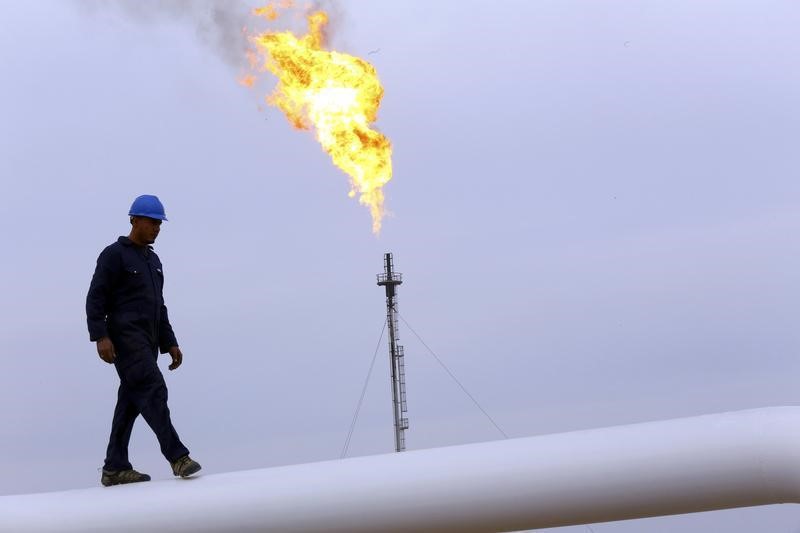Investing.com – Oil markets jumped 2% on Wednesday after U.S. government data showed the biggest weekly crude drawdown in six months, before paring gains on concerns over the nation’s debt crisis and a potential rate hike in July — even with a likely pause next month.
New York-traded West Texas Intermediate, or , crude settled up $1.43, or 2%, at $74.34 per barrel. It earlier hit a three-week high of $74.73. The U.S. crude benchmark had gained 1.8% over two previous sessions, putting it on track to a 4% weekly gain after last week’s 2%.
London-traded crude, the global benchmark for oil, also hit a three-week peak, at $78.66, before settling up $1.52, or 2%, at $78.36. Brent rose 1.6% in two previous days of trading.
Crude prices pulled back from their highs after U.S. House Speaker Kevin McCarthy said on Wednesday he and congressional Republicans were still “far apart” with President Joe Biden and the Democrats in talks to raise the federal debt ceiling, although the matter can be wrapped in 72 hours if there’s a deal.
With just eight days before the United States will likely default on its payments without a hike of its present $34.1 trillion debt ceiling, McCarthy said he was sending negotiators to the White House to resume talks that have repeatedly broken down over the past fortnight.
On the rates front, Federal Reserve Governor Chris Waller suggested that the central bank may skip an increase in June but still lean towards a July hike depending on inflation data. “I do not expect that data in the next couple of months to make it clear that the terminal interest rate has been reached,” Waller added.
Oil markets peaked earlier after U.S. government data showed massive drawdowns in both crude and fuel stockpiles, indicating demand in the run-up to summer road, air and seaborne travel.
The fell by 12.456 million barrels during the week ended May 19, the Energy Information Administration, or EIA, said in its Weekly Petroleum Status Report.
Analysts tracked by Investing.com had only forecast a crude draw of 0.920M for last week. In the prior week to May 12, the EIA reported a crude build of 5.04M barrels.
Historical EIA data showed last week’s draw to be the most since the week ended November 25, or the largest in six months.
The EIA also reported a draw of 1.6M barrels from the U.S. Strategic Petroleum Reserve, which the Biden administration has been tapping since late 2021 to ease crude supply tightness in the market. If that were to be added to total draws, the net decline in crude stockpiles last week would be above 14M barrels.
On the fuel side, the EIA reported larger deficits as well in weekly stockpiles of gasoline and distillates.
On the front, the consensus draw was 2.053M barrels versus forecasts for a deficit of 0.695M and the previous weekly decline of 1.381M. Automotive fuel gasoline is the No. 1 U.S. fuel product.
With , the slide was more modest at 0.562M barrels, versus expectations for a build of 0.057M and the prior week’s deficit of 0.080M. Distillates are refined into , diesel for trucks, buses, trains and ships and fuel for jets.
Read the full article here




